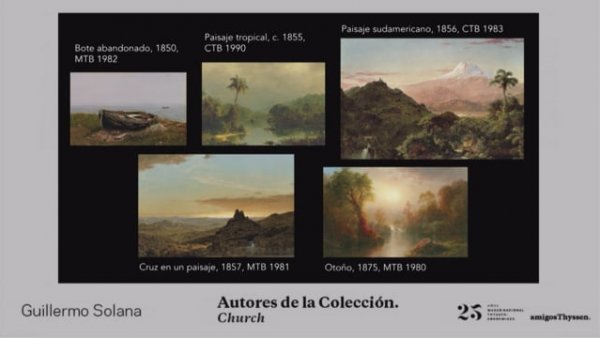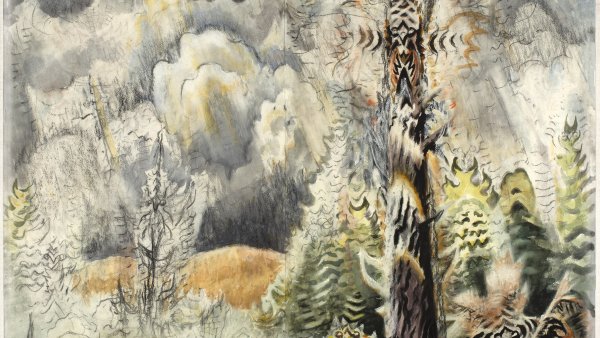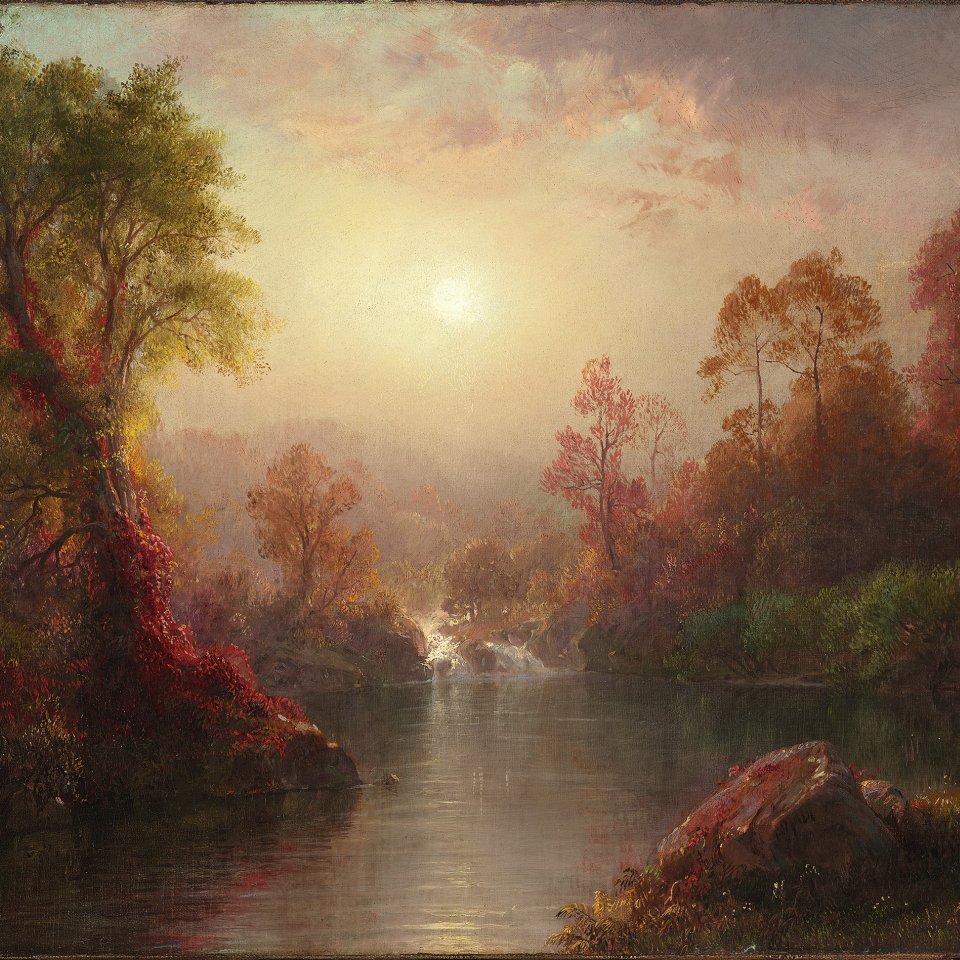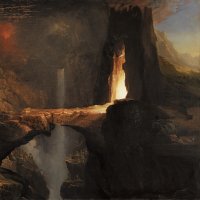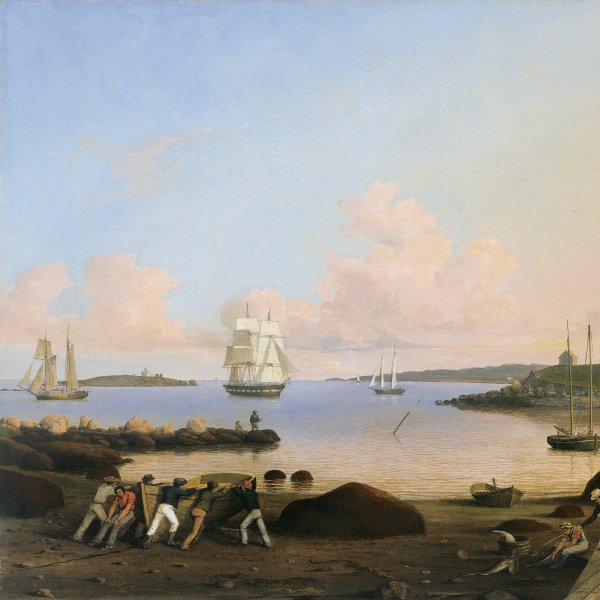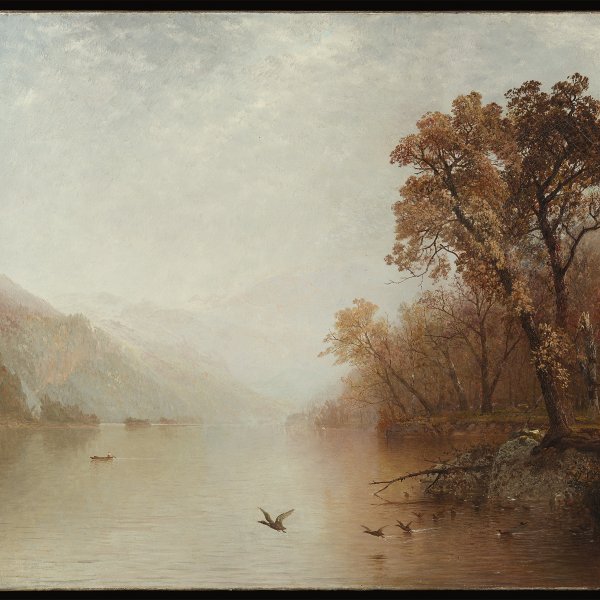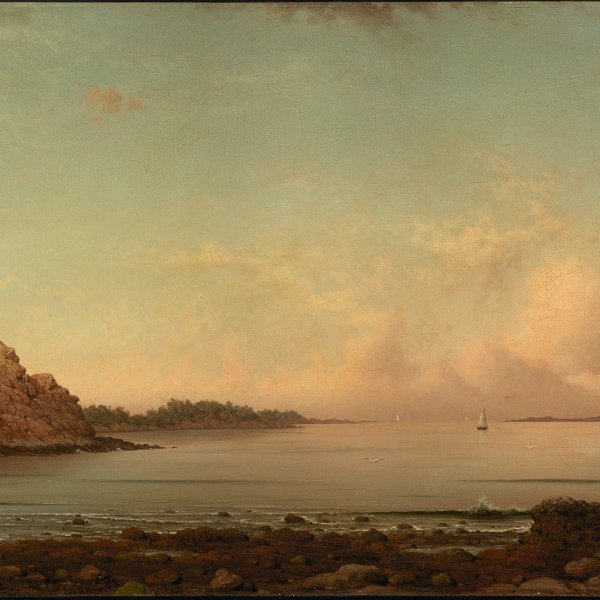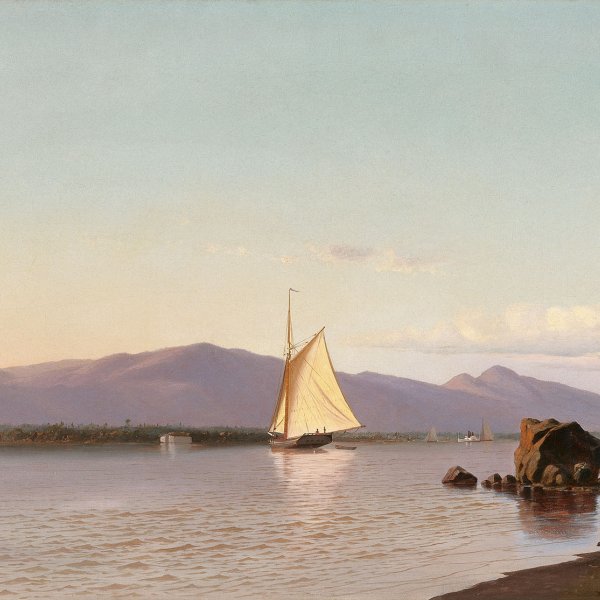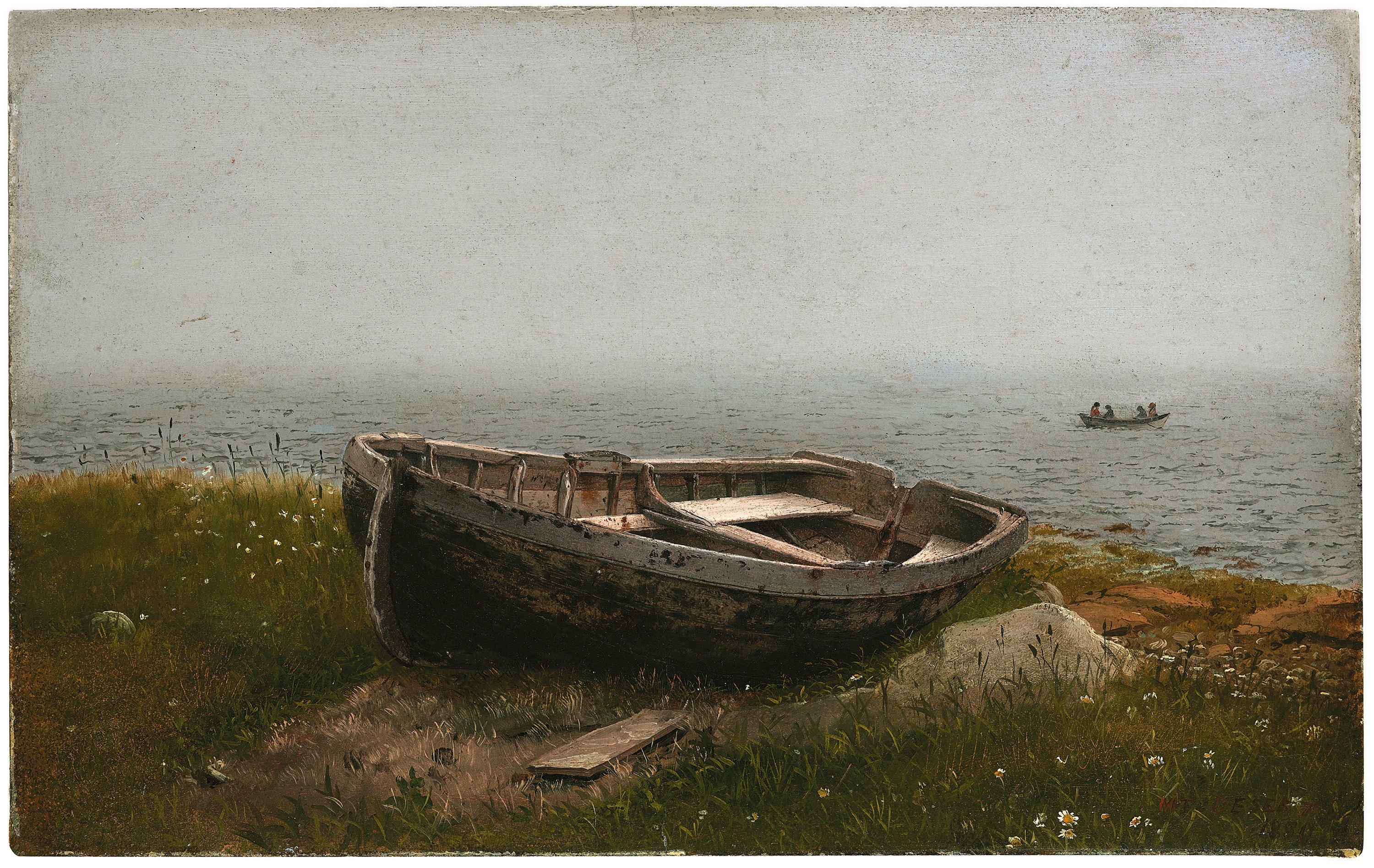Abandoned Skiff
1850
Oil on Cardboard.
28 x 43.2 cm
Museo Nacional Thyssen-Bornemisza, Madrid
Inv. no.
509
(1982.40
)
Room 31
Level 1
Permanent Collection
Frederic Church, one of the leading landscape artists of the Hudson River School, produced an outstanding gallery of pictures both of his own country and of the different exotic lands to which he travelled during his lifetime. In summer 1850, Church paid his first visit to Mount Desert Island, a spot frequented by artists before the boom in mass tourism. After a long journey, travelling overland through Vermont and New Hampshire by train and then on board a steamer and schooner, the artist arrived at this small island off the Atlantic coast of Maine. During his stay he made numerous drawings and oil sketches, including this poetic Abandoned Skiff, as a result of direct observation of the coast. In his chronicle of this journey, which describes his impressions of the island and its Irish inhabitants, Church mentions that he painted “the hull of a boat and some rocks” on a foggy morning.
The small boat rendered in minute detail in the foreground takes on huge proportions, occupying much of the composition. In the background, in a sea with a misty horizon, two couples enjoy a ride in a small boat. The artist most likely based the work on the sketches made by his master Thomas Cole during his stays on the coast of Maine during the previous decades. Church also shares Fitz Henry Lane’s admiration of the light-diffused atmosphere and frequent mists of the island to convey the romantic associations of the place. Picturesque America, a publication edited by the writer William Cullen Bryant to disseminate the wonders of the American landscape, mentions in connection with Mount Desert Island the unique pleasure of sitting on a rocky promontory on a day when the mist and the sun vie for supremacy and of observing the images that emerge and vanish in the mist.
Furthermore, as John Wilmerding points out, there is an “implied narrative content in the abandoned skiff, ” which can be interpreted as a metaphor of the human condition according to the custom of depicting empty vessels as symbols of the journey of life. For her part, Katherine E.Manthorne relates the work to the publication of Herman Melville’s Moby Dick in 1851, a novel about the whalers of New England, which shows how the artist was in tune with the interests of the public.
On returning to New York, Church exhibited his works at the National Academy of Design, the American Art-Union and the Pennsylvania Academy of Fine Arts. The New York Daily Tribune stressed the particular success of “a very small picture, representing an old boat high upon the shore, and the fog stealing in over the sea.”
Paloma Alarcó
The small boat rendered in minute detail in the foreground takes on huge proportions, occupying much of the composition. In the background, in a sea with a misty horizon, two couples enjoy a ride in a small boat. The artist most likely based the work on the sketches made by his master Thomas Cole during his stays on the coast of Maine during the previous decades. Church also shares Fitz Henry Lane’s admiration of the light-diffused atmosphere and frequent mists of the island to convey the romantic associations of the place. Picturesque America, a publication edited by the writer William Cullen Bryant to disseminate the wonders of the American landscape, mentions in connection with Mount Desert Island the unique pleasure of sitting on a rocky promontory on a day when the mist and the sun vie for supremacy and of observing the images that emerge and vanish in the mist.
Furthermore, as John Wilmerding points out, there is an “implied narrative content in the abandoned skiff, ” which can be interpreted as a metaphor of the human condition according to the custom of depicting empty vessels as symbols of the journey of life. For her part, Katherine E.Manthorne relates the work to the publication of Herman Melville’s Moby Dick in 1851, a novel about the whalers of New England, which shows how the artist was in tune with the interests of the public.
On returning to New York, Church exhibited his works at the National Academy of Design, the American Art-Union and the Pennsylvania Academy of Fine Arts. The New York Daily Tribune stressed the particular success of “a very small picture, representing an old boat high upon the shore, and the fog stealing in over the sea.”
Paloma Alarcó

